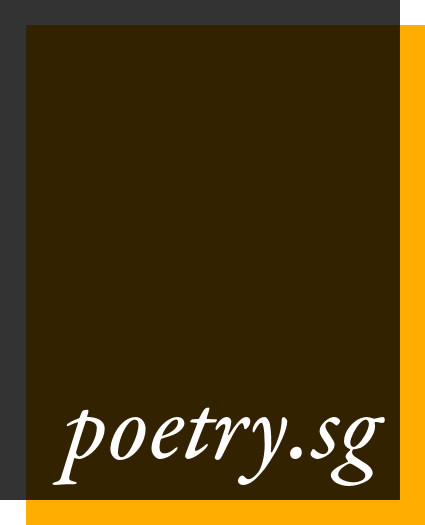Marc Nair (b. 1981)
FEATURES / TRACK CHANGES
The Uncertainty of Emotion
Written by Marc Nair
Dated 30 Jul 2020
I went back to a poem from my first collection, Along The Yellow Line. Published in 2007, the collection revolved around the topic of faith.
The Uncertainty of Emotion
I was spinning in circles, the way I used to
when I was a kid, spreading my arms out like a heli,
rotating slowly at first, than faster and faster,
watching objects around me slide past.Potted plants, the piano, a bookcase, the TV,
the plants again. Falling into a blur, trying
to keep on my feet, staying in one place.
If I stopped, I would lose my balance, clatter, and fall.And yet I loved that feeling;
Hovering in the cross-sections
Of motion, with the intangibility,
The uncertainty of emotion.I was spinning in circles when you walked in,
watched me for a while, crossed out my debts
with a gracious smile and lightly touched
my spinning hip out of joint.I don't walk the same way anymore.
Fourteen years later, my beliefs have shifted rather significantly. I wanted to see how I could approach the subject differently. In the end, what emerged was a complete rewrite of the poem.
The Uncertainty of Emotion
I don’t walk the same way anymore
there is a limp where
I used to jump
for hours in ecstasythere is an urge to run
when I hear half-tongued
voices raised in unisonthere is a crack in my spine
when someone slayed me on
the concrete floor of their faithI don’t walk the same way anymore
where there was blessing
I see broken reason, absolve
science of its findingswhere there were open hands
I see story-blind books,
an ornamental crosswhere there were clouds parting
I see the sun after monsoon rain;
time to hang out the laundry
I kept the title only because I think it applies to the revised iteration of the poem as well. The new poem begins with the last line of the old poem, representing some kind of continuity but also taking that point of change and re-presenting it.
The last line becomes a refrain in the second poem, which offers glimpses of a different belief system through a range of images, further contrasting it from the original, where a childish game of spinning until one gets dizzy and disoriented predominates—an image that represented, back then, my state of spiritual disorientation and subsequent salvation.
The new poem contains the “aftermath” of religious experience, but it is also clear-eyed in a return to reasonable behaviour, ending on a quotidian image: one that takes into account the natural world while acknowledging the necessity for continuing to live the daily routine.


